Top 10 foods you shouldn't be eating (and 10 you should)
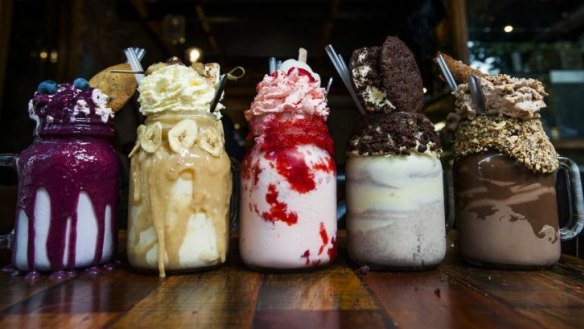
Health professionals are famously reticent to condemn most foods outright, preferring an "eat in moderation" approach, but when push comes to shove, experts such as accredited practising dietitian Joel Feren and nutritionist Catherine Saxelby have a few foods they advise us to steer clear of, and others they reckon we should add to our diet for a healthier 2016.
Eat less....
Sports drinks and 'fat' water
Sports drinks contain both sugar and salt and Joel Feren reckons they are best left to elite athletes who need to replace electrolytes. Moderate exercisers should simply rehydrate with water. Available in bottles in the US, "Fatwater" hasn't yet hit our shores, but it's only a matter of time. As the name suggests, Fatwater is flavoured water with added fat, usually in the form of coconut oil that is high in saturated fat, Feren says.
Gluten-free products
A strong and often ill-informed anti-gluten sentiment means there are now hundreds of everyday products in the supermarket boasting their gluten-free status and many shoppers select them under the belief that they're a better option. Unless you're a coeliac, though, Feren says there is no reason to eat gluten-free products. "They are no healthier. In fact, gluten-free products are often high in salt and kilojoules and there's also often added fat to give springiness to baked products."
Doughnuts, cronuts, bronuts and freakshakes
It will surprise few that deep-fried cronuts or choc-dripped milkshakes garnished with Tim Tams and doughnuts get a red card from health professionals, even if they do send our Instagram followers into a liking frenzy. "An aberration," Saxelby calls freakshakes and hybrid pastries. "They're laden with fat and kilojoules and seem to exist more for their shock value than anything else. If you have to have one, take a photo and share or just eat half."
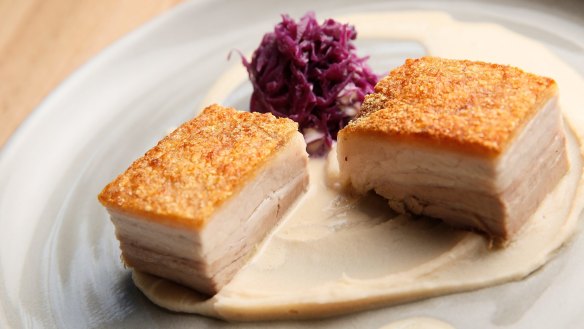
Pork belly
It's often a restaurant menu fixture and our love affair with this soft, fatty cut still rages fierce, but Saxelby is not a fan. "Pork belly has about two centimetres of fat and it's not fat within the muscle fibre, which is OK, but the outer fat which is mainly saturated fat with a bit of monounsaturated fat. There are still studies being done, but there is still plenty of credible research that shows that eating saturated fats puts you at risk of heart disease," she says.
Vegie chips
They may be found in the health aisle of the supermarket, but if you presume they're "good for you" because they are made with vegetables other than potatoes, think again. "Most potato chips have around 20 per cent fat – I've seen vegetable chips with 30 per cent fat," Feren says. In the US, there are even some ranges of vegie chips fried in "healthier" coconut oil, resulting in a saturated fat content of about 35 per cent, no doubt a trend headed this way.
Fruit juice
It may make you feel virtuous, but did you know that there's likely to be as much sugar and as many kilojoules in your fruit juice as in soft drink? A 2014 article in British medical journal The Lancet cites research that has found that, while eating whole fruit appears linked to reduced or neutral risk for diabetes, high fruit juice intake is a risk factor. "And unless you have a Nutribullet or similar [blender], you miss out on the benefits of the fibre," Feren says.
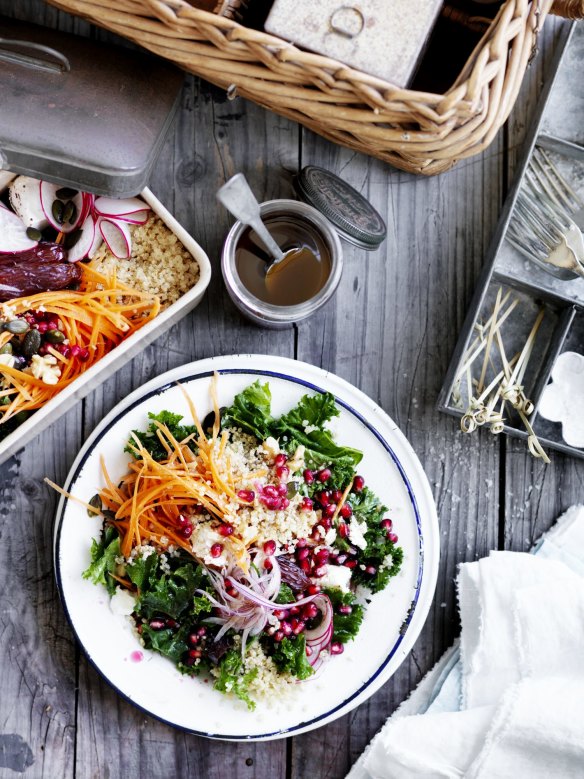
Kale
It's not that there's anything wrong with kale per se but, at up to $5 a bunch, Saxelby says it's both overhyped and overpriced. The good news for those of us who have a tendency to buy this expensive leafy green (only to leave it wilting in the vegetable crisper), is that there are alternatives. A member of the brassica family, this so-called "superfood" counts brussels sprouts and cabbage among its relatives; Saxelby says these options (along with spinach) are just as nutritious and far cheaper than kale.
Alcohol
The bad news is that even the antioxidant benefits of a glass of wine are outweighed by the kilojoules, Feren says. "All alcohol is pure empty kilojoules and can be a gut irritant," he says. "Beer is high in carbs and kilojoules and cider contains a lot of sugar – a double whammy from the fruit and the alcohol." If you're watching your waistline, Feren says, "lite" beer is a better choice.
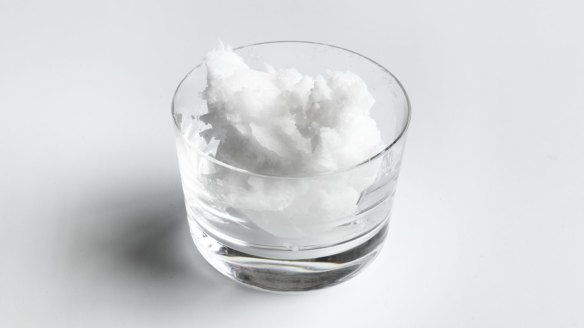
Coconut oil
Coconut oil's alleged health benefits include satisfying sweet cravings, easing digestion and helping with weight control but Saxelby points out that coconut oil is very calorific with 90 per cent saturated fat. "It was previously thought that coconut oil influenced the good type of cholesterol," Feren says. "However, recent research seems to suggest that it has no bearing on HDL [good] cholesterol after all. If anything, it likely increases one's bad cholesterol, so it's best used sparingly or not at all."
Rice malt syrup
The anti-sugar brigade reckons rice malt syrup is better than cane sugar and use it extensively in cooking, but Saxelby says that, while it may indeed be low in fructose, it has a high glycaemic index (GI) that results in a rapid rise in blood glucose levels. "Often the [sugar-free] desserts are very calorific too, with the addition of coconut fat, chocolate etc, so they're no healthier."
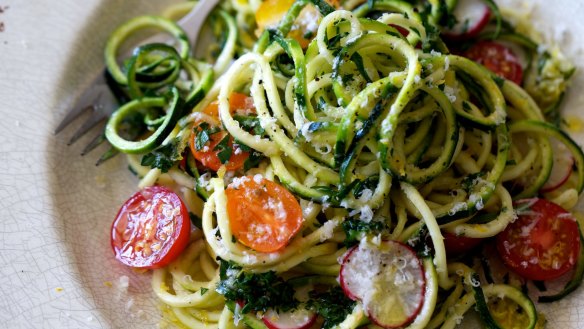
Eat more...
"Zoodles"
Get out the vegetable spiraliser. Saxelby says "zoodles" – zucchini noodles made from spirals of raw zucchini – are "the best thing to come out of the raw food movement". Zucchini is low in kilojoules and contains vitamin C and potassium. The noodles can be eaten raw as the base of a salad, or very lightly sauteed and used in place of pasta with meatballs or a vegetarian sauce.
Oats
Whether cooked as porridge or pre-softened and eaten raw, oats are high in beta-glucans and can help decrease the absorption of cholesterol, Feren says. "Oats are low GI, so their carbohydrate is slowly absorbed into your system, giving you energy for hours after eating and they contain thiamine and niacin, as well as minerals like phosphorus, potassium and magnesium."
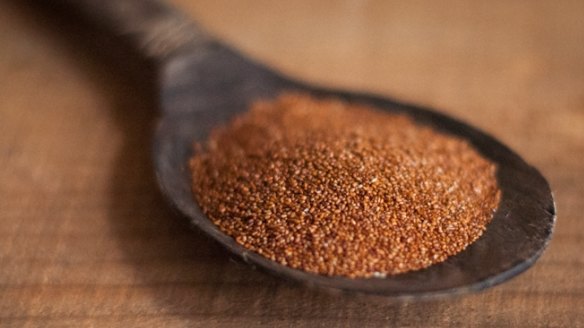
While it may not push quinoa out of pole position, Saxelby predicts we'll see more of this tiny ancient African grain this year. Teff is high in iron and calcium as well as B vitamins and manganese and contains resistant starch that helps regulate blood sugar. Saxelby recommends substituting about one-fifth of your regular flour in muffins or cakes with teff or adding it to muesli.
Berries
Don't give up your acai bowl. Berries are relatively low in sugar and high in disease-fighting antioxidants. Feren says there's also evidence to show that people who eat berries regularly have lower rates of colourectal cancer and heart disease.
Eggs
Eggs fell out of favour for a while due to concerns about cholesterol, but Feren says that anyone who follows a healthy balanced diet low in saturated fat can eat up to six eggs a week without increasing their risk of heart disease. Eggs contain 11 vitamins and minerals and they are high in protein, which means they'll keep you full for longer, so are perfect for dieters.
Cow's milk
Nut milks such as almond, macadamia or rice milk are convenient if you can't tolerate dairy and they can add a nice flavour to food, Saxelby says, but they don't have the same nutritional profile as cow's milk. "Cow's milk is superior in calcium, phosphorous and protein."
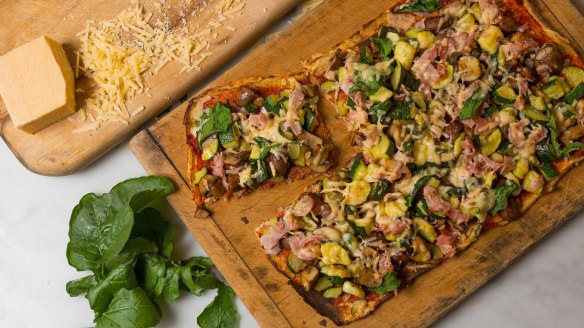
Cauliflower
Thanks to championing by chefs such as Yotam Ottolenghi, the humble cauliflower has been appearing more frequently on restaurant plates, but home cooks are discovering the adaptable qualities of the vegetable, too. "Cauliflower mash is great to replace more calorific potato or to use as a base for pizza," Saxelby says.
Paleo style
"The philosophy is not quite correct, but it's a healthy diet with fresh fish, meat and lots of veg," Saxelby says. People following the paleo diet eschew processed foods, dairy and grains, but Saxelby says she would add two to three serves a day (1/2 a cup cooked) of simple wholegrains and legumes such as brown rice, pearl barley or whole rye to make it the ideal diet.
Nuts
All nuts are good, Feren says, and are best eaten raw and unsalted for the greatest benefit. "Nuts are high in protein and fibre, while varieties such as walnuts have omega-3 fats". Almonds have monounsaturates that are good for heart health as well as protein, calcium and vitamin E, while just two brazil nuts provides 100 per cent of an adult's daily selenium requirements.
Bread
It may be controversial, but Feren says we should be eating wholegrain bread. "Evidence shows that eating high-quality carbohydrate grains, like those found in bread, will help to optimise physical and mental performance." Two slices, at about 600 kilojoules, contain long-sustaining carbohydrates, fibre, and an array of vitamins and minerals.
Restaurant reviews, news and the hottest openings served to your inbox.
Sign up